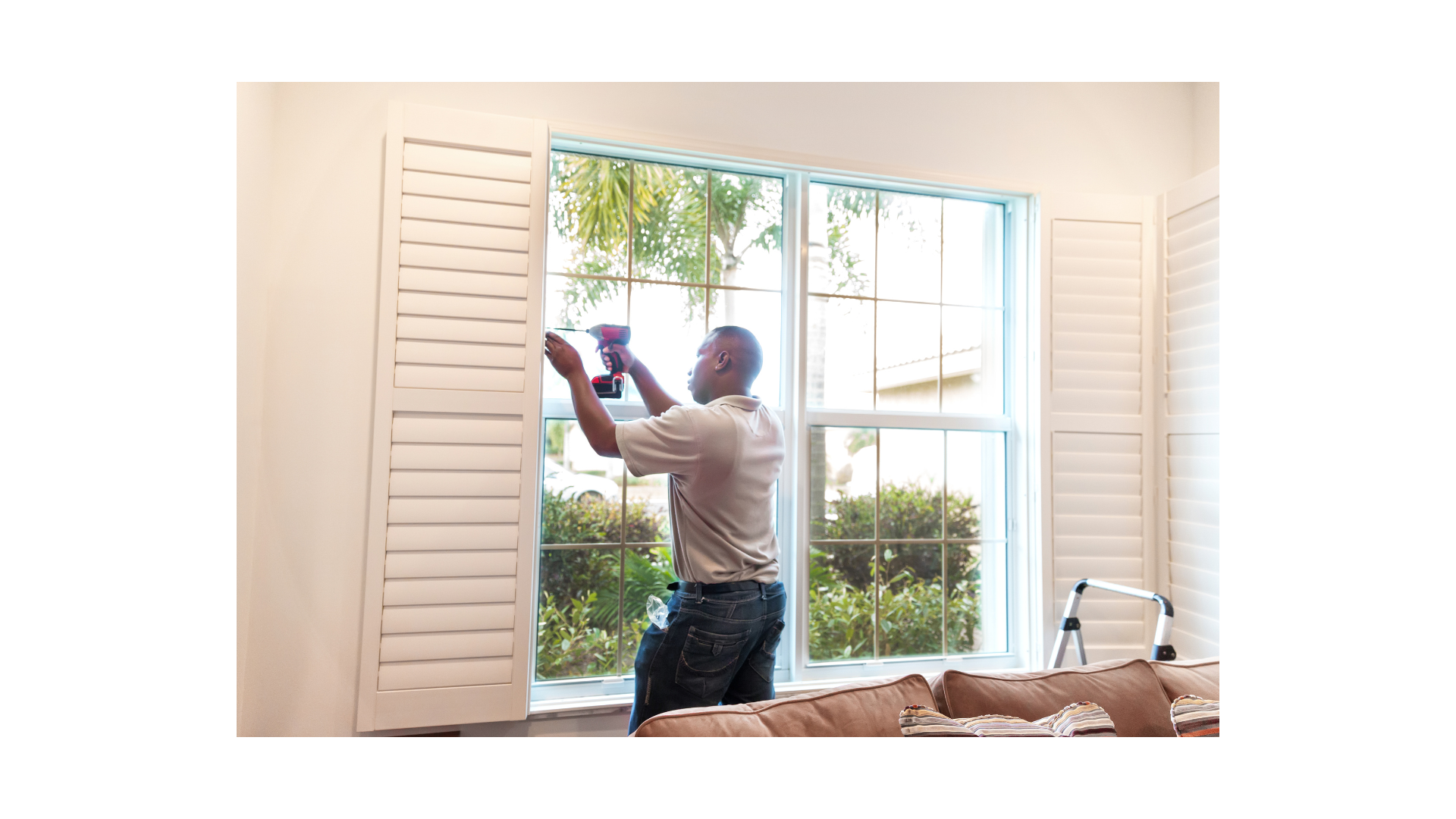
The Future of Home Design: Trends in Replacement Windows
Welcome to the forefront of home design innovation! In the realm of architectural aesthetics and functionality, replacement windows have emerged as key players in shaping the future of residential spaces. As homeowners increasingly seek energy efficiency, sustainability, and style, the evolution of replacement windows has become a focal point in modern design trends. In this blog, we delve into the dynamic landscape of replacement windows, exploring the latest advancements, popular styles, and sustainable materials that are revolutionizing the way we think about windows. From sleek, minimalist designs to high-tech features like smart glass, the possibilities are endless in transforming both the interior and exterior of homes. Join us as we embark on a journey through the cutting-edge trends reshaping the architectural identity of our living spaces. Whether you’re a homeowner looking to upgrade your windows or a design enthusiast curious about the latest innovations, this exploration of the future of home design promises to inspire and inform.
Embracing Efficiency: How Replacement Windows Are Transforming Home Energy Usage
In an era where sustainability is at the forefront of our minds, every aspect of home design plays a crucial role in reducing energy consumption and minimizing our carbon footprint. Among these, replacement windows stand out as a key player in transforming the way we use energy within our homes. In this article, we’ll delve into how replacement windows are revolutionizing home energy efficiency, exploring the latest trends in window technology and how they’re helping homeowners save money on their energy bills while making a positive impact on the environment.

Understanding Energy Efficiency Ratings
Before diving into the specifics of how replacement windows enhance energy efficiency, it’s essential to understand the energy efficiency ratings that guide their design and performance. The most commonly used rating system is the Energy Star certification, which indicates that a window meets certain standards for energy efficiency set by the Environmental Protection Agency (EPA). These ratings take into account factors such as U-factor, Solar Heat Gain Coefficient (SHGC), and Visible Transmittance (VT), which collectively determine how well a window insulates, blocks heat from the sun, and allows natural light to enter the home.
Advanced Insulation Technologies
Replacement windows are equipped with advanced insulation technologies that significantly reduce heat transfer between the interior and exterior of the home. One such technology is double or triple glazing, which involves multiple layers of glass separated by insulating gas fills such as argon or krypton. These gas fills act as barriers against heat loss or gain, keeping the home’s interior temperature consistent and reducing the need for heating or cooling.
Low-E Coatings for Enhanced Performance
Low-emissivity (Low-E) coatings are another innovation that has transformed the energy efficiency of replacement windows. These microscopic coatings are applied to the glass surface to reflect infrared light while allowing visible light to pass through. By minimizing heat transfer through the glass, Low-E coatings help maintain comfortable indoor temperatures year-round, reducing reliance on heating and cooling systems and lowering energy costs.
Tighter Seals and Weather Stripping
In addition to advanced glazing technologies, replacement windows feature tighter seals and weather-stripping to prevent air leakage and drafts. Poorly sealed windows can account for significant energy loss in a home, as conditioned air escapes and outdoor air infiltrates, forcing HVAC systems to work harder to maintain desired temperatures. By ensuring a tight seal around the window frame, replacement windows eliminate these air leaks, resulting in improved energy efficiency and enhanced comfort for homeowners.
Solar Heat Gain Management
While natural light is desirable for illuminating indoor spaces, excessive solar heat gain can lead to discomfort and increased cooling costs, especially in warm climates. Replacement windows address this issue through innovative technologies such as spectrally selective coatings and tinted glass, which selectively block infrared radiation while allowing visible light to enter. By managing solar heat gain effectively, these windows reduce the need for artificial lighting and cooling, further contributing to energy savings.
Beyond Glass: Innovations in Materials for Replacement Windows
When it comes to replacement windows, the focus often tends to be on the glass – and for good reason. However, the materials used in the frames and other components of windows are just as crucial for energy efficiency, durability, and aesthetics. In this article, we’ll explore the advancements in materials beyond glass that are shaping the future of replacement windows. From innovative composites to sustainable options, these materials are revolutionizing window design and performance, offering homeowners a wide range of choices to suit their needs and preferences.
Composite Frames
Traditional window frames made of wood or aluminum have their drawbacks – wood can rot or warp, while aluminum is prone to corrosion and poor insulation. Composite frames, made from a combination of materials such as fiberglass, vinyl, and wood fibers, offer a solution to these issues. These frames are highly durable, resistant to moisture and pests, and provide excellent thermal insulation, contributing to improved energy efficiency and longevity of the windows.
Vinyl
Vinyl has become a popular choice for replacement window frames due to its affordability, low maintenance requirements, and thermal efficiency. Unlike wood, vinyl frames are impervious to moisture, making them resistant to rot and decay. Additionally, vinyl frames can be filled with insulation to further enhance their energy-saving properties, making them a cost-effective option for homeowners looking to upgrade their windows.
Fiberglass
Fiberglass is another material gaining traction in the replacement window industry due to its strength, durability, and versatility. Fiberglass frames offer exceptional thermal performance, with low conductivity that helps minimize heat transfer between the interior and exterior of the home. These frames are also resistant to warping, shrinking, and expanding, ensuring a tight seal and smooth operation over time.
Aluminum Clad Wood
For homeowners who desire the classic look of wood windows but require added durability and weather resistance, aluminum-clad wood frames are an excellent option. These frames feature a layer of aluminum on the exterior, providing protection against the elements, while the interior retains the warmth and beauty of natural wood. This hybrid construction combines the best of both materials, offering aesthetics, insulation, and longevity.
Recycled Materials
In line with the growing emphasis on sustainability, some replacement window manufacturers are turning to recycled materials as alternatives to traditional options. Recycled aluminum, vinyl, and wood can be repurposed into new window frames, reducing the demand for virgin materials and minimizing waste. These eco-friendly windows not only contribute to environmental conservation but also offer the same performance and durability as their non-recycled counterparts.
Customization and Personalization: Tailoring Replacement Windows to Your Unique Style
Gone are the days of one-size-fits-all windows. Today, homeowners have the opportunity to tailor their replacement windows to match their individual style and preferences. From frame colors to hardware finishes, the options for customization are virtually endless. In this article, we’ll explore the importance of customization in replacement windows and highlight key points to consider when personalizing your window design.
- Frame Materials: Choose from a variety of frame materials, including vinyl, wood, aluminum, and fiberglass, each offering unique aesthetic and functional properties. Consider factors such as durability, maintenance requirements, and environmental impact when selecting the right material for your replacement windows.
- Style Options: Replacement windows come in a range of styles, from classic double-hung and casement windows to modern picture and awning windows. Select a style that complements the architectural design of your home and reflects your personal taste.
- Color Selection: Personalize your replacement windows with a wide array of frame colors and finishes. Whether you prefer timeless neutrals, bold hues, or natural wood tones, there’s a color option to suit every aesthetic.
- Hardware and Accessories: Don’t overlook the importance of hardware and accessories in enhancing the overall look of your replacement windows. Choose from an assortment of hardware finishes, such as brushed nickel, oil-rubbed bronze, or satin chrome, to add a touch of elegance to your windows.
Conclusion
The future of home design, particularly concerning replacement windows, appears promising with innovative solutions offered by companies like EZ Window Solutions of Akron. As technology advances and environmental consciousness grows, trends in replacement windows are likely to focus on energy efficiency, durability, and aesthetic appeal. With EZ Window Solutions’ commitment to providing high-quality products and excellent service, homeowners can anticipate a seamless transition towards more sustainable and visually appealing home designs. Embracing these trends not only enhances the aesthetics of living spaces but also contributes to energy conservation and a greener future for generations to come.


Write a Comment